Fg Off. Hjalmar Lorens Tambour
(1918 - 1980)
Profile
Fg Off. Hjalmar Lorens Tambour was one of the Danes serving in the RNZAF. He flew more than 150 sorties over Italy from July 1944 until the end of the war and was credited for damaging two German fighters. Between operational tours he served as an instructor in Egypt for nine months. He was naturalised in New Zealand after the war.
Hjalmar Lorens Tambour was born as Hjalmar Lorents Olesen on 21 November 1918 in Esbjerg, the youngest child of tailor Christian Olesen and Thyra Olesen (nee Maltesen). The family assumed the name Tambour in 1927.[1] Tambour attended Esbjerg Statsskole and was trained as tailor like his father before the war.[2]
Tambour’s sixteen years elder brother, Otto, had emigrated to New Zealand in 1928.[3] Otto visited Denmark from May 1939, and Tambour left for New Zealand with him in September 1939 settling with the brother in Waumaiku.[4]
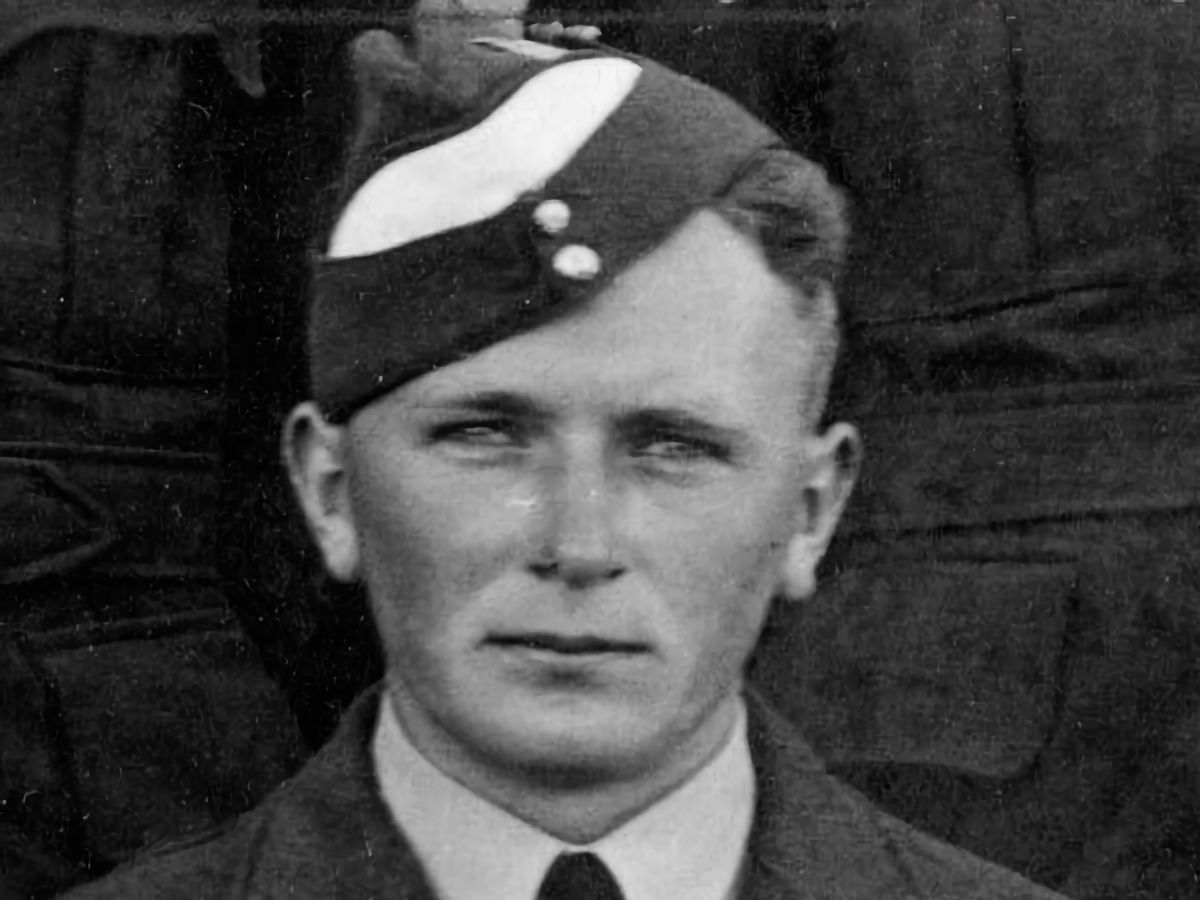
Volunteers for overseas service
Shortly after the German occupation of Denmark, in May 1940, Tambour volunteered for overseas service in the RNZAF. He went through medical examination at the time, but he did not enlist until 9 November 1941 (NZ.416182). He was posted to the Initial Training Wing at RNZAF Station Levin. This school had been set up at the the Government Training Farm at Weraroa had been taken over for the purpose.[5] On 21 December 1941, he was posted to 4 Elementary Flying Training School, Whenuapai, to commence flying training. He was part of the ‘A’ Flight of Course No. 25D at the school.
Tambour was posted to 3 Service Flying Training School at RAF Station Ohakea for further training, where he attended Course No. 25C as a member of the ‘B’ Squadron. The RNZAF made an extensive reorganisation of the flying training schools in February 1942 following the Japanese attacks in the Pacific and in respect of the promises made under the British Commonwealth Air Training Plan. In consequence, the 3 SFTS was disbanded, and two other SFTSs at Woodbourne (originally known as Blenheim) increased in size.[6] Tambour transferred to Woodbourne on 8 March 1942, where he became part of Course No. 25B training on single engine aircraft (Harvards). He was awarded his flying badge on with effect from 13 May 1942 and left 2 SFTS on 12 June 1942, ready for overseas service. He was promoted to Sergeant on the 13th.
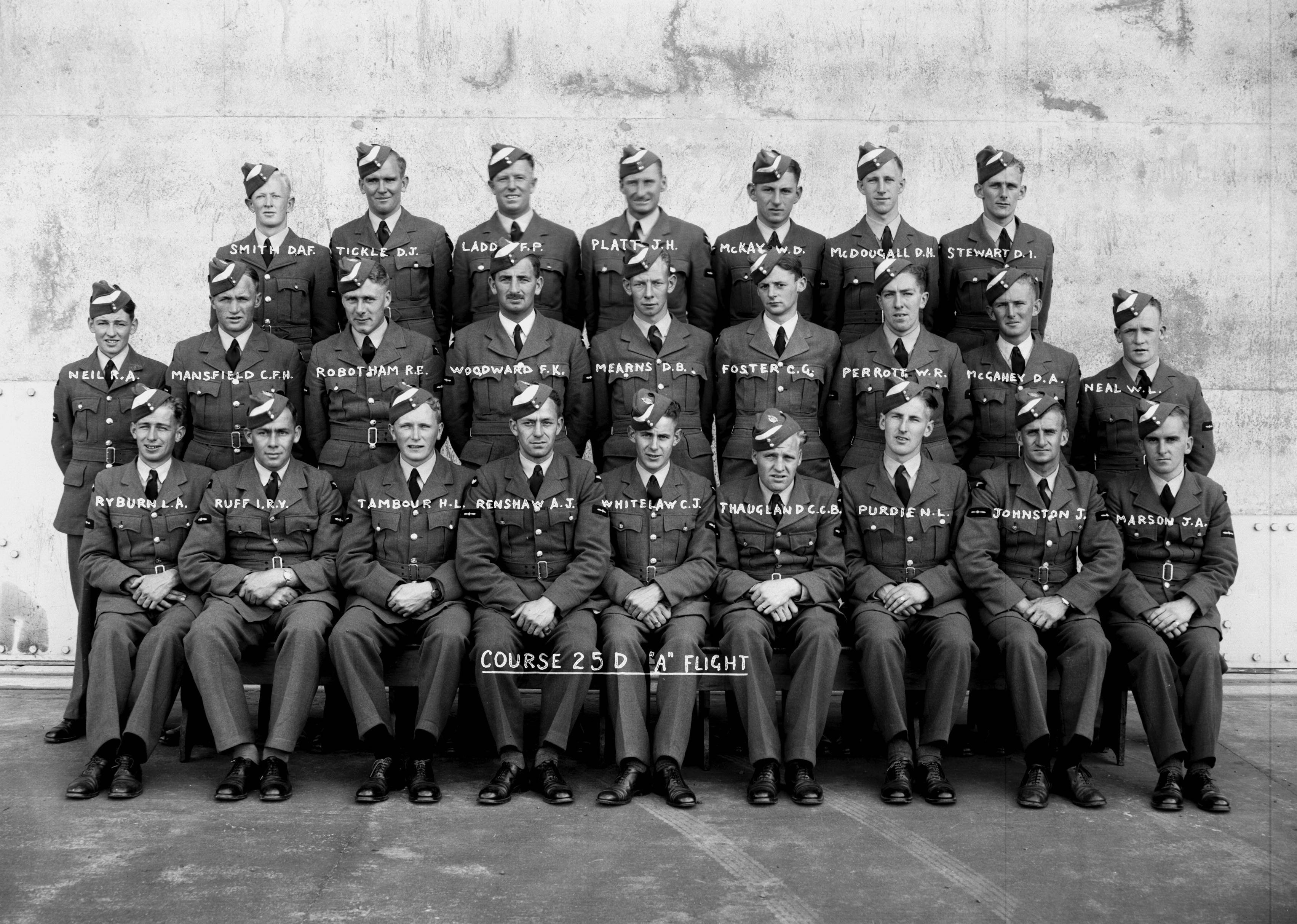
Tambour embarked for overseas service on 21 June 1942. He travelled from New Zealand via Canada, and arrived at 1 “Y” Depot in Halifax on 19 July 1942. He crossed the Atlantic arriving in the United Kingdom on 30 July 1942, where he was posted to 3 Personnel Reception Centre in Bournemouth.
He followed the normal route for RNZAF pilots arriving in the United Kingdom at this point, that is, he was posted to an Advanced Flying Unit (AFU) for further training and to familiarize with higher powered aircraft and different weather conditions in the United Kingdom. Tambour was posted to 7 (Pilot) AFU at RAF Peterborough on 24 August 1942.
Then followed a posting at 10 Flying Instructor School (Elementary) at RAF Station Woodley for training as elementary flying instructor from 14 October to 4 December 1942. The assessment of his ability as an instructor was unfavourable and it was recommended that he was withdrawn from the course and continued training as a fighter pilot. In the words of the Chief Flying Instructor:
This N.C.O. is just average in his general flying by day, his aerobatics being weak, and general handling unpolished, he is below average at night and is quite unlikely to reach a standard enabling him to instruct at night. This, combined with his below average standard in ground subjects, renders him unsuitable for further training as a flying instructor. He is recommended for training on single engine Day Fighters.[7]
Tambour returned to 7 (Pilot) Advanced Flying Unit and from there to 57 Operational Training Unit at RAF Station Eshott. He attended No. 45 Course training on Spitfires at this unit from 26 January to 6 April 1943. He was found to be an above average pilot
A sound and steady type of pilot. He will make an efficient sub-section leader with a little Squadron experience. Suitable for a commission. Above the average. OC, Wing Commander, 57 OTU, 6 April 1943[8]
He was posted to 5 Personnel Despatch Centre in Blackpool on 7 April 1943 awaiting a posting in North Africa. On 15 May 1943, he was promoted to Flight Sergeant.
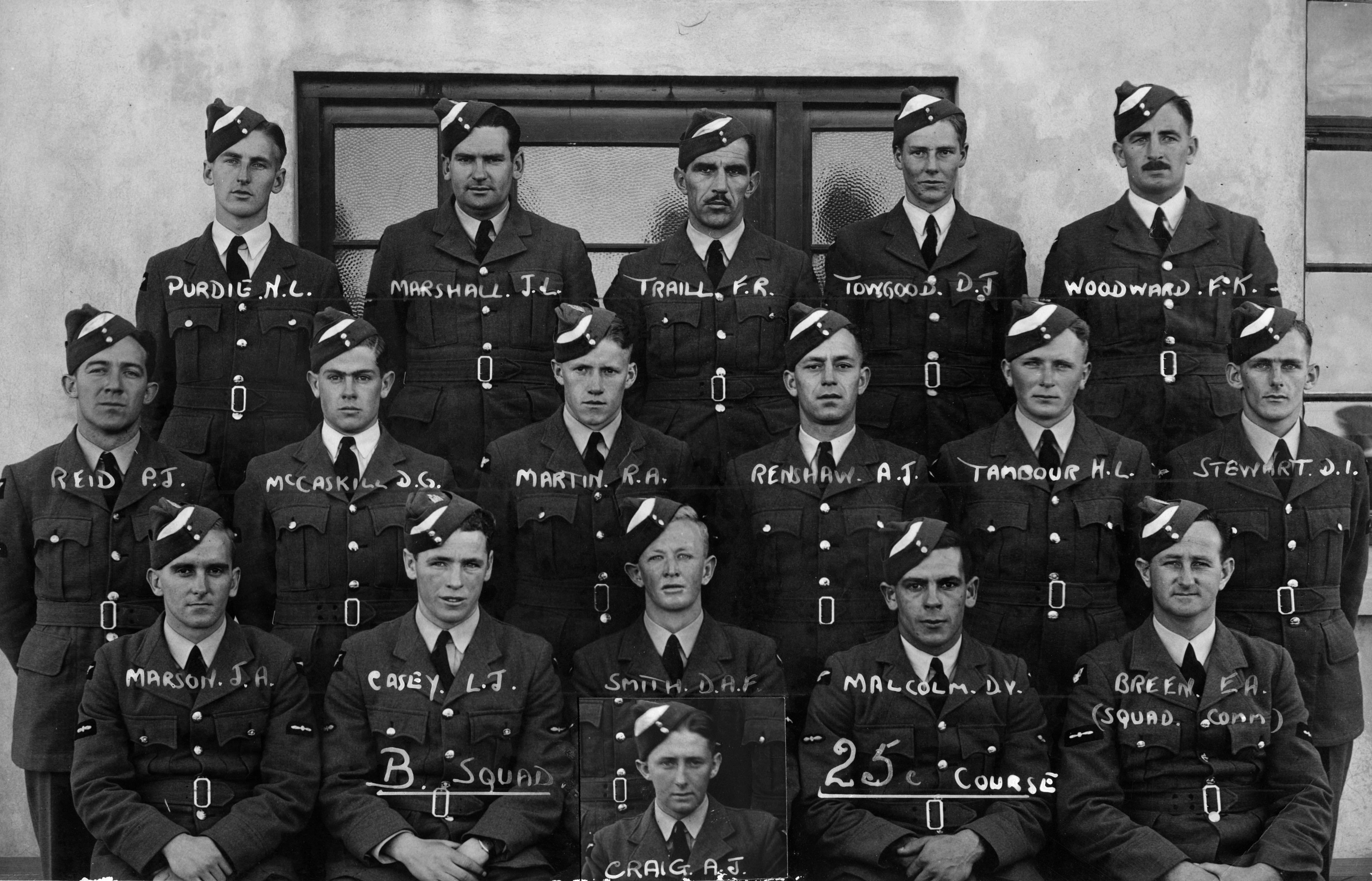
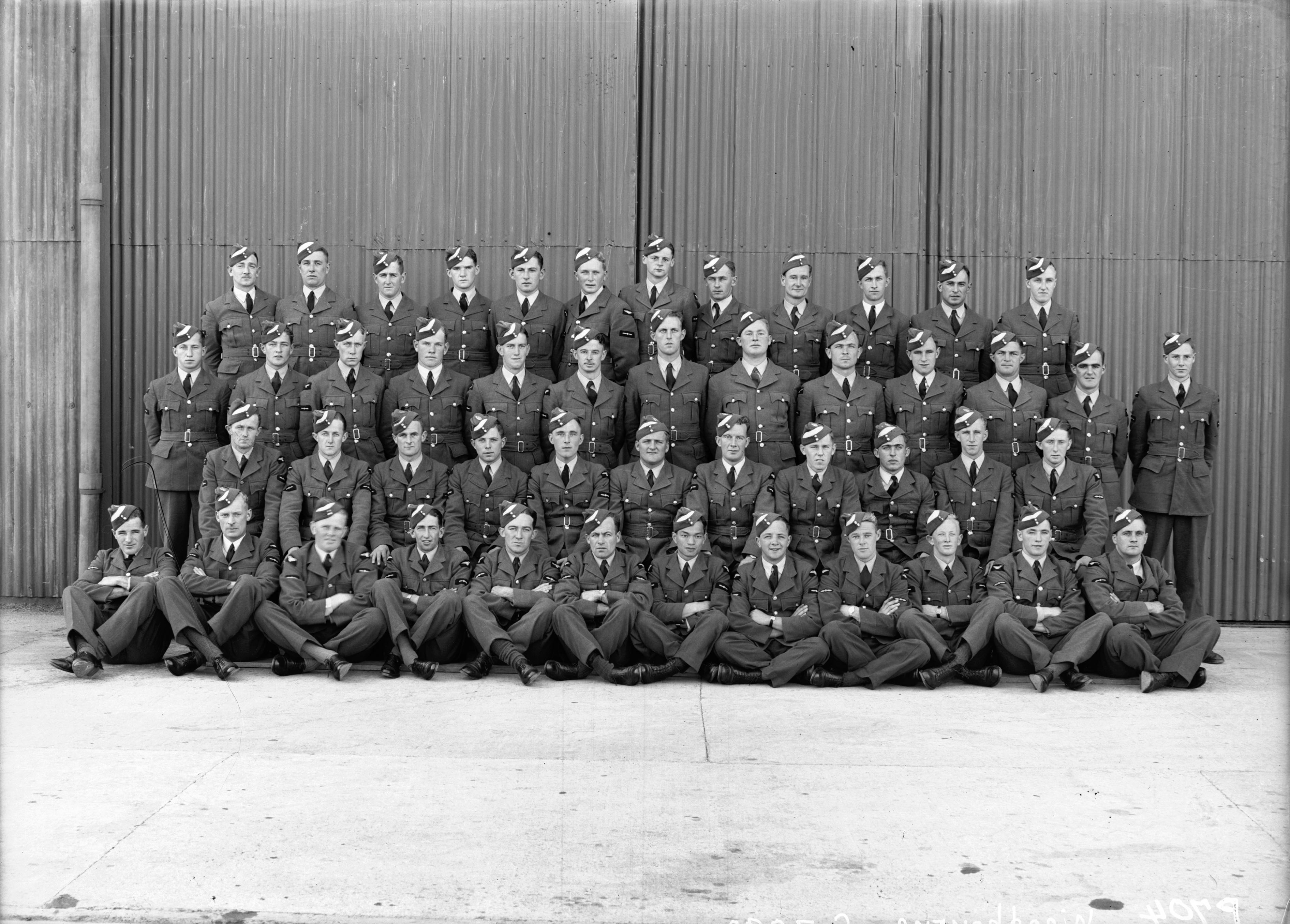
To Malta for the invasion of Sicily
The Axis forces in North Africa surrendered on 13 May 1943, ending more than two years of battle. At the Casablanca Conference in January 1943, the Allies had agreed on the military strategy for the coming years. Churchill had very much favoured an invasion of Sicily, while others, especially the US Army Chief-of-Staff George C. Marshall, wanted to use all means available for an invasion in Northern France. By opening a second front in Italy, Britain wished to protect strategic interests in the Mediterranean. In the end, the invasion of Sicily, Operation Husky, was agreed upon. The main objectives of the operation were to assault and capture Sicily as a base for operations against Southern Europe, and to secure the line of communication through the Mediterranean, thus reducing the long route around the Cape for the Far East by passing through the Suez Canal. Furthermore, the invasion would divert German troops from the Russian front and put Italy under increasing pressure. During the first half of 1943, the Allied air forces intensified operations over mainland Italy and Sicily, at the same time as a massive build-up of land, air, and naval forces took place on the island of Malta.[9]
Tambour was posted to 93 Squadron (324 Wing) then at RAF Hal Far on Malta, arriving in early July 1943.[10] This squadron had reformed as a fighter squadron equipped with Spitfires in June 1942. In September 1942, preparations for service overseas begun and, in November, the squadron had left for North Africa, commencing operations from Souk-el-Arba in support of the forward troops on 21 November 1942, about two weeks after the allied landings in North Africa (Operation Torch). Following the end of the campaign in North Africa on 13 May 1943, the squadron moved to Hal Far on Malta and began flying offensive operations in preparation of the invasion of Sicily.
The invasion began on the night of 9/10 July 1943 with airborne as well as seaborne landings. The squadron flew convoy patrol over the invasion fleet on the 9th, and beach patrols from the early hours of the 10th. One of the main objectives of the first phase of the operation had been to seize the airfield at Pachino. This was accomplished and the squadron was able to refuel at the airfield in the early hours of the 13th. The same day, Tambour flew his first two sorties, which also led to his first aerial combat experience. In the first of these missions, twelve Spitfires took off from Hal Far to patrol over Augusta, north of Syracuse; they were met by seven Italian Macchi 202 fighters. Sqn Ldr Sizer shot down one aircraft, and two other pilots were credited each with one aircraft probably shot down. Two more Italian aircraft were damaged, leaving only two Italian aircraft unharmed.
The Allied landings were successful, but they could not prevent the evacuation of large parts of the German forces to mainland Italy. Even though the squadron was very active during this period, acting as escorts to Kittyhawk fighter-bombers and to Boston or Mitchell medium-bombers, for unknown reasons, Tambour did not fly operationally again before mid-August and not regularly until the beginning of September.
Messina Crossing
In September 1943, the Allies invaded the Italian mainland in three separate landings. First was the crossing of the Straits on Messina from Sicily to Reggio di Calabria on 3 September 1943 in Operation Baytown; the second the main landing at Salerno, which launched on 9 September 1943 (Operation Avalanche); and, finally, the landing at the port of Taranto, also on the 9th (Operation Slapstick).
Tambour and 93 Squadron participated in the cover for the Messina crossing, carrying out three patrols over Noto Bay between Augusta in the north and Syracuse in the south. Two days later, on 5 September 1943, they were operating further north over Messina before noon, and, later that day, they were escort to three squadrons of Kittyhawk fighter-bombers attacking the roads along the south-eastern coast of Italy. At Salerno, fierce fighting followed on the ground following the initial landings, but the troops in the bridgehead—supported by reinforcements, artillery support from Navy ships in the bay, and heavy bombing from the Strategic Air Force—turned the battle in favour of the Allied forces. On 16 September 1943, the first reconnaissance units of XIII Corps advancing from south met with patrols of VI Corps west of Vallo. From this point, the Germans, realising the situation, began to withdraw.[11] Tambour’s squadron was involved in the protection of the bridgehead during these days of intense battle on the ground; Tambour participated in eight operations, patrolling over Salerno in an area codenamed ‘Peaches’. Most of the operations were carried out without incident. On 10 September 1943, the squadron’s ‘A’ party left for the marshalling area for embarkation to Italy, in preparation for the squadron to operate from there. A patrol on 11 September 1943 was a tragic exception to the otherwise eventless operations. The squadron had been ordered by the controller to use temporary landing strips very close to the front lines to refuel between patrols. One of these was a landing strip at a position (N.8505) just north of Paestum, in a sector controlled by the US Army’s 36th Infantry Division. As the squadron was in circuit over the strip, with wheels and flaps down, American flak opened up on the Spitfires. One Spitfire was shot down, killing the pilot, while another pilot managed to land unhurt despite his Spitfire being hit. Other aircraft were damaged as well but managed to land, in spite of the friendly fire.
Mainland Italy
Tambour carried out his last operation from Malta on 18 September 1943. On 23 September, the aircraft of the squadron moved to Montecorvino Airfield, which had been an important objective of the initial landing operation, and, two days later, they proceeded to Asa. On the 27th, the squadron was ordered to move to landing strip Battipaglia, from where it carried out operations from the following day. The squadron was soon on the move again, moving to Capodochino airfield in Naples on 11 October 1943. The next day, the squadron was operational from the new airfield, and Tambour carried out his first operation since the patrols over Salerno. From 12–17 October 1943, Tambour flew patrols over the Volturno River, supporting the advance of the Fifth Army towards the Winter Line. On the first day, the squadron met no opposition in the air, but were met by very intense and accurate flak from the ground. On 13 October 1943, the squadron encountered approximately sixteen Bf 109s, claiming two destroyed, one probably destroyed, and one damaged, without any damage to the Spitfires. The following weeks, Tambour was involved in different types of operations, ranging from scrambles from the base and patrols, to escorting fighter-bombers and bombers, to offensive sweeps.
From late November, the squadron supported the armies on the ground, flying a large number of so-called bomb line patrols. The patrol on 8 January was one of the more eventful ones. On 8 January 1944, Wg Cdr Loughton led ten Spitfires on a bombline patrol in the Cassino-Gaeta area. Tambour took off at 14.45 hrs in Spitfire Vc JK271/HN-U. At 15.39 hrs, flying at 18,000 ft north of Gaeta, the squadron met a mixture of approximately twenty Bf 109s and Fw 190s. South of Cassino, they met a mixture of approximately twenty Bf 109s and Fw 190s. The Fw 190s dive-bombed south of Cassino and then turned away; four Bf 109s stayed as top cover at about 20,000 feet and could not be reached, but 93 Squadron engaged the remaining Bf 109. Tambour gave chase to eight Bf 109s on his own, and damaged one before they turned around. We are able to get his own version from the sortie report, that the wrote shortly after. In contract to the description above, he states that the enemy aircraft was a Fw 190, not a Bf 109:
Whilst on patrol as Red two, II sighted 8 FW190s flying due north up the coast north of Gaeta, about 5,000 feet below us. We were at 18,000 feet. I called up Red one and asked him to follow me down, and dived after the FW190s. I made an attack on the port aircraft of the port section of four, giving him a short burst of cannon from dead astern and below at 250 yards. I saw no strikes, so closed to 150 yards and gave him two more short bursts and saw strikes on his tail. Then the starboard section of four aircraft broke into me and I was forced to break off the section. I claim one FW190 damaged.[12]
Tambour’s claim was approved by the Wg Cdr Flying.
Defending the Anzio Bridgehead
In early January 1944, the Allied advance in Italy had stalled in the area of Monte Cassino in central Italy. Later in the month, on the 22nd, the Allies landed at Anzio (Operation Shingle). The aim of the operation was to outflank the German forces, who had successfully completed a strategic withdrawal to a line of defensive positions across Italy that was known as The Winter Line. Outflanking the Germans would allow a march on Rome. The Allies succeeded in establishing a bridgehead at Anzio, but the Germans prevented the advance from this position for several months. The outbreak from the bridgehead was not secured until 23 May 1944, when Operation Diadem was launched.
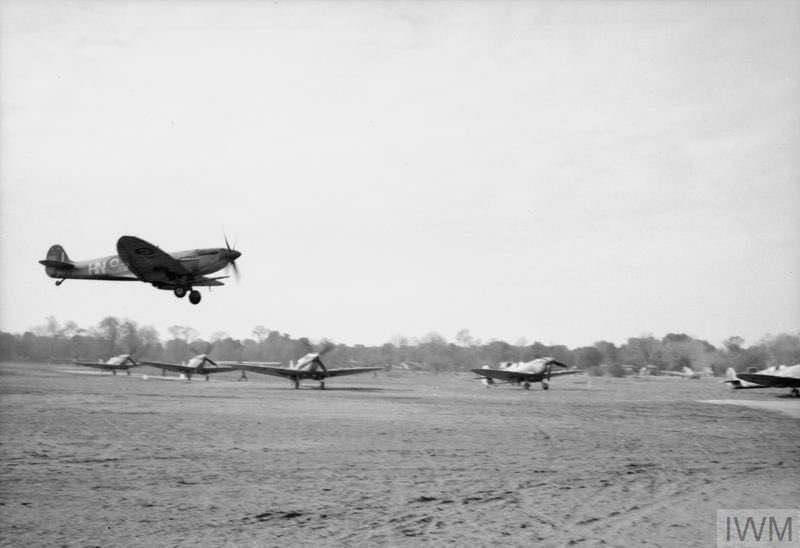
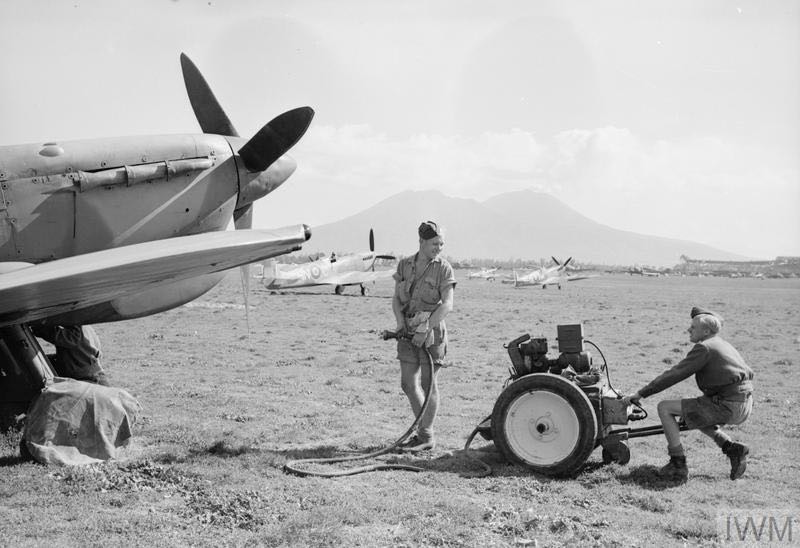
Tambour flew more than fifty sorties from the landing at Anzio and until his first tour expired in May 1944. Many of these were patrols over the bridgehead, but they also included other duties such as escort operations. Many patrols were uneventful, but not all.
On 13 February 1944, Tambour took off in Spitfire IX MA221 ’HN-X’ from Lago Landing Ground at 0700 hrs as part of a formation of eight Spitfires carrying out a patrol from 8,000 feet. They observed approximately twenty Fw 190s that dived from 7,000 feet from north, turned east and bombed the road and railway just north of Anzio. The Spitfires followed them, but had to give away because of intense flak. In his combat report Tambour elaborated on the situation:
Whilst on patrol as Green two, I sighted 10 approx. FW190s diving in from the West towards Anzio. They dropped their bombs from 4,000 feet and I dived down to engage them. They climbed up to 7,000 feet and I followed them through intense flak of alle descriptions. I got behind a FW190 and gave him a medium burst of cannon and machine gun from over 250 yards and astern, observing no results. Seeing another FW190 diving at me from port and astern, I turned into him, whereupon he continued diving and II got on his tail. He then climbed and attempted a flick but actually rolled - thus losing his speed. I closed rapidly and gave him a long burst of cannon and machine gun from 250 yards, dead astern and below, seeing a flash from his port engine cowling, following a second later by a similar flash from the starboard side. He then lost more speed and began weaving violently. As six FW190s were then about to attack me I was forced to break off combat. I claim One FW190 Damaged.[13]
Tambour’s claim was approved by the Wg Cdr Flying.
About four weeks later, on 9 March 1944, the engine of Spitfire MA221 ‘HN-X’ cut out at 15,000 feet over the beaches at Anzio, and Tambour had to bail out into the sea. He was picked up by a Supermarine Walrus and returned to base the following day, uninjured.
Tambour was commissioned as Pilot Officer with effect from 27 March 1944.[14]
Nine months as instructor in Egypt
On 5 May 1944, Tambour’s tour expired; he had flown 123 operations since arriving at the squadron in July 1943. He was posted to 3 Base Personnel Depot, Naples, waiting for passage to RAF Middle East at Heliopolis, Egypt. On 2 June 1944, he was taken on strength in 203 Group, where he served as an instructor at RAF Ismailia from 8 June 1944 and attended No. 71 Flying Instructor Course at RAF Station Shallusa from 3 July 1944. While this is not confirmed by the service record, it presumed that he was an instructor at 71 Operational Training Unit. He remained here for nine months and was promoted Flying Officer with effect from 27 September 1944.[15]
On 24February 1945, he was transferred to 22 Personnel Transit Centre at at Almaza, Egypt, waiting for passage to Italy. He deplaned in Italy—56 Personnel Transit Centre—on 6 March 1945 and was posted to 324 Wing on 13 March 1945, ready for another operational tour.
Tambour returned to 93 Squadron on 20 March 1945,[16] flying thirty-six operational missions before the end of the war. In fact, he carried out more missions in April 1945 than in any other month during his time at the squadron. The squadron, now flying Spitfire IX LF (low flying) configured with two 250-lb bombs, was operating in a close tactical support role to the army. On 22 March, Tambour took off on his first mission since his return to the squadron. Four Spitfires, including Tambour in Spitfire IX MN904, took off at 1355 hrs from Ravenna on a ‘rail cut’—a bombing mission against the railway line between Citadella and Campo Sampiero. During the following days, Tambour participated in several operations against railroad targets.[17]
At the beginning of April 1945, the squadron carried out several missions supporting the operations in the area of Lake Comacchio, north of Ravenna. Here, the 2nd Commando Brigade was to capture the spit on the east side of the lake. The operation, Operation Roast, opened on the night of 1–2 April, and continued until the 5th. Before this operation ended, another operation, Operation Fry, which aimed to occupy four islands in the northern part of the lake, was launched. The first morning of Operation Roast, Tambour was in the air twice, and the next day, he took part in a Rover operation in support of the commandos. The targets were 105 mm guns in a field on the spit. In spite of hazy weather, five of the six Spitfires, including Tambour, managed to drop their bombs on target, as well as strafing the target area.
On the night of 3–4 April, two assault forces from 2nd Commando Brigade—including ‘M’ Squadron, led by Dane Major Anders Lassen VC, MC and two Bars—took position on the Boscoreale Peninsula in preparation for Operation Fry, which was to open the following night. The following evening, at about 1900 hrs, 93 Squadron carried out two close support missions bombing the islands. Six aircraft took off at 1810 hrs from Ravenna to carry out the attack. Tambour was flying as number six in Spitfire IX JL228; he overshot the target, but another pilot got a direct hit. All aircraft strafed the target, as well as a rowing boat nearby. Shortly afterwards, another six aircraft carried out another attack on the island, causing considerable damage which then was increased by strafing. At least eight Germans were killed and another thirty left the islands in rowing boats following the attacks. It might have been one of these that 93 Squadron reported to have strafed.[18] This is a rare—if not unique—example of one Dane providing air support to another Dane on the ground. Tambour continued operations during the following days.
On 9 April 1945, the Eighth Army opened the final offensive in Northern Italy. Tambour’s squadron was involved in a supporting role on the opening day of the offensive. Twelve aircraft of the squadron took off to firebomb an area on the western bank of the Senio River, where Polish troops were to advance. The squadron obtained excellent results from the bombing. Between 9–30 April, Tambour carried out another twenty-one missions, taking him to a total of thirty-one during a very busy month. The majority of the operations were close-support bombing missions and armed reconnaissance missions in the area. Tambour took off on his last operational mission of the war on 30 April 1945, an offensive patrol north-east of Udine. They observed more than 200 motor transports and heavy duty vehicles on the run in the area. Tambour destroyed one motor transport and damaged four heavy duty vehicles.
On 2 May 1945, the Germans in Italy surrendered. The squadron moved from Ravenna to a new air strip at Rivolto near Udine on 3 May 1945. On 15 May, the squadron moved again, this time to Klagenfurt in Austria. From here they flew tactical reconnaissance, searching for transport movements in the area.
Returning to New Zealand
Tambour was posted to 56 Personnel Transit Centre, Portici, with effect from 14 June 1945 and transferred to 1 Personnel Despatch Centre at West Kirby in the United Kingdom on 20 June 1945. On 7 August 1945, he was posted to 12 (RNZAF) Personnel Despatch and Reception Centre in Brighton awaiting repatriation. He returned to New Zealand on 14 October 1945 and was transferred to the reserve on 27 January 1946. Tambour was awarded the 1939/45 Star, Africa Star, and Italy Star as well as the Defence Medal.
On 31 March 1947, the National Employment Service of New Zealand informed the Air Secretary that the Consul-General for Denmark was making enquiries about whether Tambour was eligible to receive the King Christian Memorial Medal 1940-45. The Air Secretary confirmed by letter of 15 April 1947 that had served in the RNZAF and served overseas from June 1942 to October 1945.[19] Tambour was awarded the Danish medal and, most likely as aa consequence, not awarded the War Medal.[20]
His commission was terminated on 1 June 1958,[21] and he died in New Zealand on 3 October 1980.[22]
Endnotes
[1] DNA: Parish record, Esbjerg Zion.
[2] NZDF (service record).
[3] Ancestry: Fremantle, Western Australia, Passenger Lists, 1897-1963.
[4] ANZ: 959/R25233498 - Tambour, Hjalmar Lorens (Dane) - Date of Birth: 21 November 1918.
[5] Ross (1955). Royal New Zealand Air Force, p. 46.
[6] Ross (1955). Royal New Zealand Air Force, p. 47. A special thanks to David Duxbury for clarification of these events.
[7] NZDF (service record).
[8] NZDF (service record).
[9] Richards and Saunders, Royal Air Force, 1939–1945. Vol. II (1954), pp. 297–323.
[10] NA: AIR 27/751. According to his service record he was posted from 324 Wing to the squadron on 10 August 1943, but he commenced operations on 13 July 1943.
[11] Richards and Saunders, op. cit., pp. 324–345.
[12] NA: AIR 27/753.
[13] NA: AIR 27/753.
[14] Ancestry: New Zealand, World War II Appointments, Promotions, Transfers and Resignations, 1939-1945.
[15] Ancestry: New Zealand, World War II Appointments, Promotions, Transfers and Resignations, 1939-1945.
[16] NA: AIR 27/753.
[17] NA: AIR 27/751–752. If nothing else is stated, the information on 93 Sqn operations is based on this source.
[18] Harder, Anders Lassens Krig (2010), pp. 522–535. Maj. Lassen was fatally wounded on the night of 8–9 April, and was posthumously awarded the Victoria Cross.
[19] NZDF (service record).
[20] DNA: Udenrigsministeriets gruppeordnede sager, 1946-1972, 48.Y.90 New Zealand.
[21] NZDF (service record).
[22] Ancestry: New Zealand, Cemetery Records, 1800-2007.